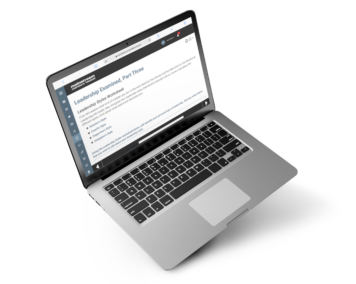27
Jan
5 reasons leadership training should be for all employees
Regardless of the myth that "leaders are born and not created," skills can be taught and improved through leadership training. Developi...
An important aspect of privacy compliance is communication, both internally and externally. Employees need to know that privacy-related policies and procedures exist in your organization, and they need to be instructed on their use. Customers also need to be informed about a company’s privacy practices, and be given the chance to ask questions. Good communication is essential for maintaining company transparency and is an important aspect of compliancy with data privacy laws, including the General Data Protection Regulation. While having written policies and procedures is the best starting place, getting the message out about privacy is a critical subsequent step in the process.


After you complete this Accounting Skills course, you will be able to:
You will spend the first part of the day getting to know participants and discussing what will take place during the workshop. Students will also have an opportunity to identify their personal learning objectives.
In this session, students will learn about different methods of good internal communication. Effective internal communication is essential for informing employees of policies and procedures relevant to their work. Without good communication, even the best policies cannot be implemented.
Next, they will learn about the two recommended types of privacy training as well as some training methods. Good, in-depth training is the best way to educate a group of employees about privacy practices. With this training, you can ensure that everyone receives the same information, and that questions or concerns are addressed appropriately.
Then, students will learn about ways to promote a good privacy culture in their organization. Having a positive privacy culture in your organization will help encourage employees to always use good privacy practices.
An organization needs to have an effective system to monitor their privacy procedures in order to ensure that all employees are following the rules, and to address any malpractices or concerns. In this session, students will learn about monitoring their privacy system using an internal audit.
In this session, students will learn about the questions a good privacy policy should answer, and how to adapt their own privacy policy. The client privacy policy is designed to inform customers and external individuals of the organization’s privacy practices. It outlines what personal information is being collected, how it will be used, who it is being shared with, and what security measures are in place.
Once a privacy policy has been adopted or changes made to a privacy policy, your customers need to be notified. Here, students will analyze the elements of an effective customer notification email.
There are a few elements to keep in mind when posting a privacy policy to your website to ensure accessibility and clarity is maximized. In this session, students will learn how to effectively add a privacy policy to their website.
Then, students will learn how to write and design their own cookie banner disclaimer for their website. Many organizations make use of cookies on their websites. Because they collect personal data, their use must be considered in the context of the GDPR and other privacy laws.
Online forms that are filled out by customers are a common way for organizations to provide services and collect information. In this lesson, students will learn how to design a privacy-compliant online form for their website.
At the end of the course, students will have an opportunity to ask questions and fill out an action plan.